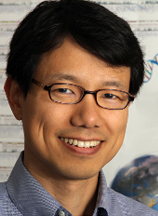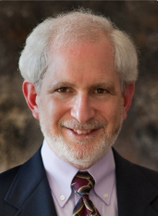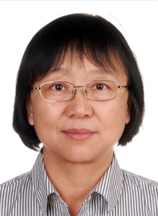
HOME > Conference Program > Plenary Lectures
Plenary Lectures
October 21 (Tue), 15:30-16:20, Rm. 103

Navigating the Cellular Landscape with New Optical Probes, Imaging Strategies and Technical Innovations
- Jennifer Lippincott-Schwartz, Ph.D.
- The Eunice Kennedy shriver National Institute of Child health and Human Development, National Institutes of Health, USA
*Sponsored by the Korea Mouse Phenotyping Center
Dr. Jennifer Lippincott-Schwartz attended Swarthmore College graduating with honors in 1974. After several years of teaching, she turned to laboratory research working with Dr. Phil Hanwalt at Stanford University receiving a Master's degree in Biology in 1979. Dr. Lippincott-Schwartz then entered the Ph.D. Program in Biology at Johns Hopkins University studying under the mentorship of Dr. Douglas Fambrough. After doing post-doctoral work in the laboratory of Richard Klausner at the National Institutes of Health in Bethesda, Maryland, she established her own lab at the National Institutes of Health and is now Chief of the Section on Organelle Biology in the Cell Biology and Metabolism Branch.
Dr. Lippincott-Schwartz uses live cell imaging approaches to analyze the spatio-temporal behavior and dynamic interactions of molecules in cells.
These approaches have helped to change the conventional 'static' view of protein distribution and function in cells to a more dynamic view that integrates information on protein localization, concentration, diffusion and interactions that are indiscernible from protein sequences and in vitro biochemical experiments alone.
Dr. Lippincott-Schwartz's projects cover a vast range of cell biological topics, including protein transport and the cytoskeleton, organelle assembly and disassembly, and the generation of cell polarity. Analysis of the dynamics of fluorescently labeled proteins expressed in cells is performed using numerous live cell imaging approaches, including FRAP, FCS and photoactivation. Most recently, her research employs photoactivation localization microscopy, called PALM, that enables visualization of molecule distributions at high density at the nano-scale. Dr. Lippincott-Schwartz serves as Editor for Current Protocols in Cell Biology and The Journal of Cell Science and she is on the Editorial Boards of Cell, Molecular Biology of the Cell and Traffic. She is an active member of the scientific community, serving as a member of the Council for the American Society of Cell Biology and on the Executive Board of the Biophysical Society. She was elected to the National Academy of Sciences in 2008.
Organizer & Chair : Sung Ho Ryu, Ph.D. (Department of Life Science, Pohang University of Science and Technology, Korea)
October 21 (Tue), 17:10-18:00, Rm. 103

What We Have Learned from Sequencing Cancer Genomes
- Peter J. Park, Ph.D.
- Center for Biomedical Informatics, Harvard Medical School, USA
*Sponsored by the Korea Mouse Phenotyping Center
Dr. Park is an associate professor at Harvard Medical School and a co-director of its Bioinformatics and Integrative Genomics Ph.D. program. His laboratory (http://compbio.med.harvard.edu) at HMS Center for Biomedical Informatics specializes in computational and statistical analysis of high-throughput sequencing data in epigenetics and cancer genomics. Originally trained in applied mathematics (B.A., Harvard; Ph.D., Caltech), he was introduced to molecular biology and genetics during his postdoctoral studies in biostatistics. He is a member of Informatics Program at Boston Children's Hospital, Division of Genetics at Brigham and Women's Hospital, Harvard/Dana-Farber Cancer Center, and the Harvard Stem Cell Institute. He is a recipient of the Sloan Research Fellowship and the Harvard Medical School Young Mentor Award.
In epigenetics, his group has pioneered analysis of ChIP-seq (chromatin immunoprecipitation followed by high-throughput sequencing) and related data to understand chromatin structure and its role in gene regulation in several model systems. In cancer genomics, his group has utilized whole-genome sequencing data to comprehensively characterize copy number variation, somatic retrotransposition, complex structural variations, microsatellite instability, and clonal heterogeneity of tumor genomes. They have also made major contributions to NIH consortium projects such as the model organism Encyclopedia of DNA Elements (modENCODE) and The Cancer Genome Atlas (TCGA), and developed many algorithms that are used by numerous research groups around the world.
Organizer : Sanghyuk Lee, Ph.D. (Department of Life Science, Ewha Womans University, Korea)
Chair : Jin Won Cho, Ph.D. (Department of Integrated Omics & Department of Biochemistry, Yonsei University, Korea)
October 22 (Wed), 11:30-12:20, Rm. 103

Neuronal Degeneration and Regeneration in Long-Lived Drosophila Larvae
- Barry Ganetzky, Ph.D.
- Laboratory of Genetics, University of Wisconsin, Madison, USA
Dr. Barry Ganetzky received a B.S. in Biology from the University of Illinois-Chicago and Ph.D. in Genetics from the University of Washington. After completing postdoctoral studies with Dr. Seymour Benzer at the California Institute of Technology, he joined the Department of Genetics at the University of Wisconsin, where he is currently Professor of Genetics and holds the endowed Steenbock Professorship in Biological Sciences. His honors include an NIH Career Development Award, a Klingenstein Fellowship, a McKnight Neuroscience Development Award, the University of Illinois Alumni Achievement Award, the University of Wisconsin Hilldale Award in the Biological Sciences, election as an AAAS fellow, and election to the National Academy of Sciences. He has served as Treasurer, Vice-President, and President of the Genetics Society of America.
For over 35 years, Dr. Ganetzky has pioneered the application of phenotype-driven, forward genetic strategies to dissect molecular mechanisms of neural signaling in Drosophila with emphasis on the larval neuromuscular system. His lab identified and characterized a number of key neural genes whose encoded proteins were previously unknown or inaccessible including para, the first invertebrate Na+ channel to be cloned; slowpoke, the first Ca2+-activated K+ channel to be cloned; eag, the prototype for a family of newly discovered voltage-activated K+ channels; and Hk, the first β subunit of voltageactivated K+ channels to be cloned. Subsequently, the Ganetzky lab isolated rodent and human orthologs of slowpoke and the eag family of K+ channels, which have provided the basis for numerous biophysical and pharmacological studies in industry and academia.The identification and cloning of human ERG (hERG), a member of the Eag family led to the discovery that mutations of hERG underlie a familial form of cardiac arrhythmia (LQT syndrome) leading to ventricular fibrillation and sudden death. Moreover, many pharmaceuticals found to cause drug-induced cardiac arrhythmias owing to interactions with hERG channels have been pulled from the market. In the USA and elsewhere, hERG channel testing of all new drug candidates is now mandatory. The mutations and molecular tools generated by the Ganetzky lab for para, eag, slo and other genes have become part of the standard Drosophila arsenal for diverse studies of neuronal excitability, axon guidance, synaptic development, circadian rhythm, learning and memory, and sleep.
More recently, the Ganetzky lab has used similar genetic and molecular strategies to dissect cellular and molecular mechanisms that regulate development, growth, and plasticity of the larval neuromuscular junction and that maintain the viability and structural integrity of neurons and synapses as a function of age.
Organizer : Kyung-Tai Min, Ph.D. (Department of Biological Sciences, School of Life Sciences, Ulsan National Institute of Science and Technology, Korea)
Chair : Woo Keun Song, Ph.D. (School of Life Sciences, Gwangju Institute of Science and Technology, Korea)
October 22 (Wed), 14:00-14:50, Rm. 103

Mechanisms of Programmed Cell Death: From Apoptosis to Necroptosis
- Junying Yuan, Ph.D.
- Department of Cell Biology, Harvard Medical School, USA
*Sponsored by the Research Center for Cellular Homeostasis
Junying Yuan, Elizabeth D. Hay Professor of Cell Biology at Harvard Medical School, received her Ph.D. in Neuroscience from Harvard University in 1989 and her undergraduate degree from Fudan University, Shanghai, China, in 1982. Dr. Yuan carried out her Ph.D. thesis work at the Massachusetts Institute of Technology. She was first appointed as Assistant Professor at Harvard Medical School in 1992, when she became a Principal Investigator of the Cardiovascular Research Center at Massachusetts General Hospital. She joined the Department of Cell Biology in 1996 and has been a Professor of Cell Biology at Harvard Medical School since 2000.
Dr. Yuan is a pioneer and a leader in the cell death field. Her discoveries on caspase, an executioner of apoptosis and two distinct forms of cell death, apoptosis and necroptosis in mammalian cells, have major impacts on our understanding of cell death and disease.
Dr. Yuan‘s accomplishment has been honored by many awards including the Innovator Award for Breast Cancer Research and NIH Director’s Pioneer award. She is a fellow of the American Academy of Arts and Sciences and a fellow of the American Association for the Advancement of Sciences.
Organizer : Yong-Keun Jung, Ph.D. (School of Biological Sciences, Seoul National University, Korea)
Chair : Hong-Duck Um, Ph.D. (Institute of Radiation Medicine Research Center, Korea Institute of Radiological and Medical Sciences, Korea)



















